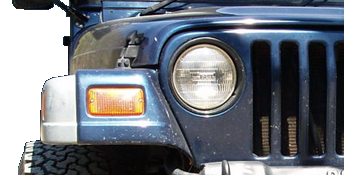Honestly both are going to have their issues, especially if you offroad them seriously.
GM has a MUCH nicer interior, and overall nicer truck, but the 1/2 ton front components are horribly weak, not counting the obvious CV joint issues, the differential is thin wall aluminum, and the passenger side axleshaft housing is known to crack in that area. The rear 8.5 (8.6 in 99 and newer) 10 bolt axle is a ticking time bomb with the oem g80 locker, although when it is not blowing up the axle, it performs miles better than the Dodge limited slip.
Dodge 1500 has a cheap feeling and outdated interior, but does have a solid axle. But... that D44 under the Dodge has an unreliable central axle disconnect for 4wd and I have heard the Dodge 44 is more susceptible to bending either at the tubes or at the Cs than other D44 models. The 9.25 rear under the Dodge is stronger than the 8.5/8.6 in the GM, and you don't have to worry about the OEM differential exploding, or actually getting traction for that matter

Although I did have an open 9.25 self destruct in my 01 Dakota just driving down the road normally when the bolt retaining the center pin backed out and the center pin dropped out and ate up the ring gear.
Upgrade to the GM 1500HD or 2500 and you keep the same nicer GM interior (relatively speaking) and gain the stronger 4l80e trans, possibly the 6.0 depending on which model you bought, and the 9.25 front IFS axle and the 9.5" Semi Float 14 bolt rear. This rear also may come with the g80 rear locker, but it is much more reliable than the 1/2 ton model. The front 9.25 diff chunk is much heavier built than the 8.25 1/2 ton axle, and the passenger side axle tube is cast iron on this, no longer making it a weak point. The AAM 9.25 is actually the twin brother of the AAM 9.25 straight axle used under the newer Dodge 2500s, they use the same carrier, and ring and pinion gears, strength is very similar. The CV's are also better built on the 3/4 ton, the real gain in strength actually comes from the wider operating angles on the 3/4 ton shafts. The 1/2 tons are stretched to their limits and the closer to the limits of a CV joint you get, the weaker it becomes, the 3/4 shaft has larger limits and therefore can take more abuse offroad where it will be cycling under power better. Still, if you droop a wheel down, cut it to the side and give it power, you will likely break it as that is getting close to it's limits.
Upgrade to the 2500HD, and everything stays the same, basically, but you get the 10.5 14 bolt rear, a 6.0 or better, and they come with a OEM 2" body "lift" (the body is mounted 2" higher on the frame to make room for the possible Allison transmission and downpipe on the Duramax)
The 5.3 in the GM may actually "feel" faster than the 6.0 in the 2500HD's because the strong 4l80e has a really high 1st gear. The 2500HD's have a higher stall torque converter because of this, if you lay into it, it really makes up for the difference, but on normal driving starts, it does feel a little sluggish because of it. After 1st gear the power of the 6.0 over the 5.3 is really noticeable. The 5.3s in the 1/2 tons are decent on fuel, getting upwards of 20mpg on the highway, the 6.0s aren't so great, you are looking at 14-16 best with a stockish truck, but still better than the 5.2/5.9 Dodge. Taller tires help to make up for the 4.10 gears that come stock in all 2500HD 6.0s. 33s fit easily, 35s fit like a glove on stock wheels, but choosing a tire with aggressive tread will further hinder fuel mileage. 255/85/16s in a AT are ideal, but look narrow.
Upgrade to the 2500 Dodge and you get a stronger D60 front, but you still have the same unreliable CAD 4wd. Newer 9.25 is improved though. Rear axle could be the D60-similar in strength to the 9.5 14SF in GM, or the D70 which is similar in strenght to the 10.5 14FF in the GM. 5.2 and 5.9 are anemic in power on the heavier 3/4 trucks, and HORRIBLE on gas, the 5.7 hemi is only slightly better on gas, but much better in power.




 Although I did have an open 9.25 self destruct in my 01 Dakota just driving down the road normally when the bolt retaining the center pin backed out and the center pin dropped out and ate up the ring gear.
Although I did have an open 9.25 self destruct in my 01 Dakota just driving down the road normally when the bolt retaining the center pin backed out and the center pin dropped out and ate up the ring gear.